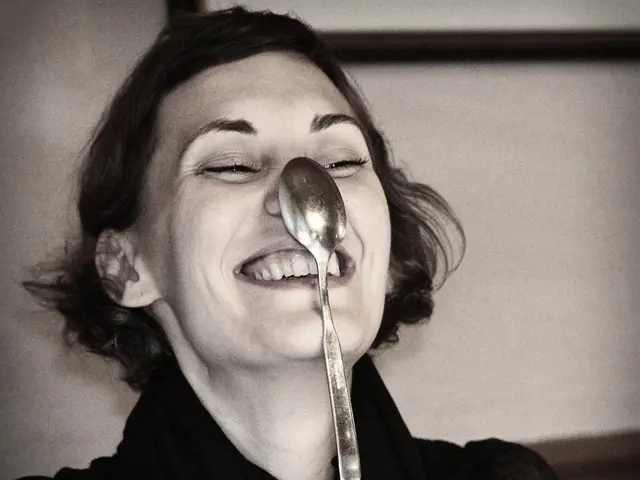Distinguishing Age Spots from Skin Cancer: A Guide to Recognition
The Lowdown on Age Spots vs Skin Cancer
As the years tick by, we see changes in our skin, such as those pesky age spots popping up. But what exactly are they, and how do we differentiate them from skin cancer? Let's dive in!
Age Spots and Skin Cancer: An Overview
Aged gracefully or illuminated by the sun, age spots (often referred to as solar lentigines or liver spots) are darker patches that develop as our bodies produce too much melanin, the pigment that protects our skin from the sun's UV rays. These spots are usually flat, smooth, and non-itchy and appear on exposed areas like our faces, hands, shoulders, and feet [1][2].
On the contrary, skin cancer is no walk in the park. Just like age spots, skin cancer often makes its debut on sun-exposed skin due to damage from UV radiation. However, unlike age spots, skin cancer can be harmful and even life-threatening if left untreated [1][2].
Speaking of cancer, did you know there are three common types: basal cell carcinoma, squamous cell carcinoma, and the most dangerous of all, melanoma? The latter is identified using the ABCDE criteria (Asymmetry, Border, Color, Diameter, and Evolution) [3].
Finding the Differences
Now, let's explore the differences between age spots and skin cancer:
- Appearance: Age spots are black, brown, or tan, while skin cancer can be a terrifying cocktail of colors, such as pink, scar-like patches, and multiple hues on one spot. Analyze any questionable growths for asymmetry, irregular borders, and distinct sizes [1][2].
- Symptoms: Age spots are generally painless, while skin cancer can present symptoms like pain, itching, or bleeding [1].
When to Raise a Red (or Any Color) Flag
Have you noticed a spot that's been changing on your skin? Maybe it's evolving in shape or size, developing new colors, or causing discomfort? It's always best to consult a dermatologist to rule out skin cancer. Early detection makes treatment easier and improves health outcomes [1][2].
Treatment Breakdown
Age spots don't demand much attention, and cosmetic treatments, such as laser therapy or chemical peels, are available for those looking to minimize their appearance [3]. When it comes to skin cancer, treatment options depend on the type and stage, possibly involving surgical removal, radiation therapy, chemotherapy, or immunotherapy [2].
Don't let fear and uncertainty hold you back from enjoying life under the sun. The key to preventing – and discovering – both age spots and skin cancer is protecting your skin from harmful UV rays, so reach for that sunscreen!
[1] https://www.mayoclinic.org/healthy-lifestyle/adult-health/in-depth/skin-cancer/art-20046060
[2] https://www.cancer.org/cancer/skin-cancer.html
[3] https://www.aad.org/public/diseases/a-z/age-spots
[4] https://www.healthline.com/health/age-spots-vs-skin-cancer#symptoms
[5] https://www.webmd.com/beauty/melanocytic-lesions-birthmarks-moles-other-disorders#1
- While age spots are typically black, brown, or tan, skin cancer can exhibit a terrifying range of colors, including pink, scar-like patches, and multiple hues on one spot.
- Unlike age spots, skin cancer can present symptoms like pain, itching, or bleeding.
- There are three common types of cancer that affect the skin: basal cell carcinoma, squamous cell carcinoma, and the most dangerous of all, melanoma, which is identified using the ABCDE criteria.
- Seniors, being at a higher risk due to prolonged sun exposure, should be vigilant about skin-related medical conditions like skin cancer and should pay special attention to any changes in their skin, consulting a dermatologist if necessary.
- Skin care is essential in preventing not only age spots but also skin cancer. Regularly applying sunscreen and protecting your skin from harmful UV rays is crucial for maintaining health and wellness.








